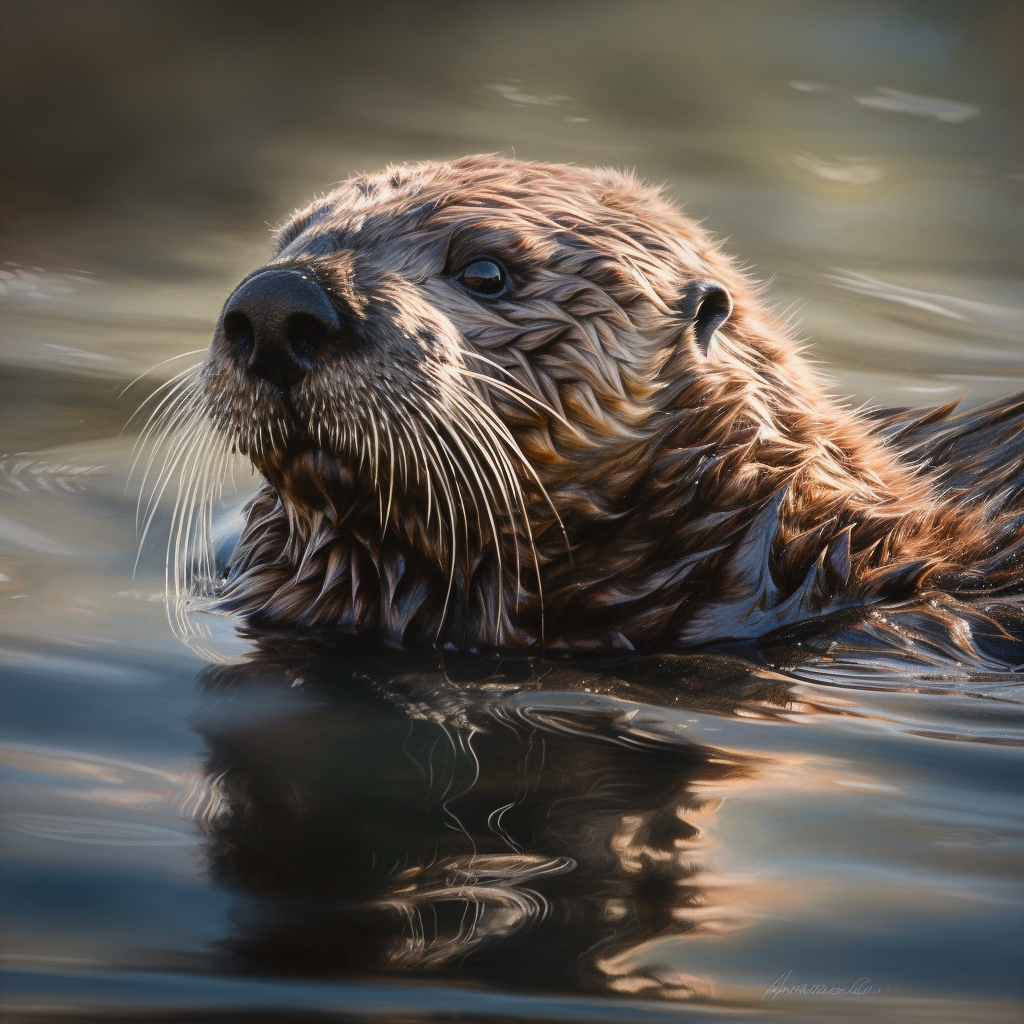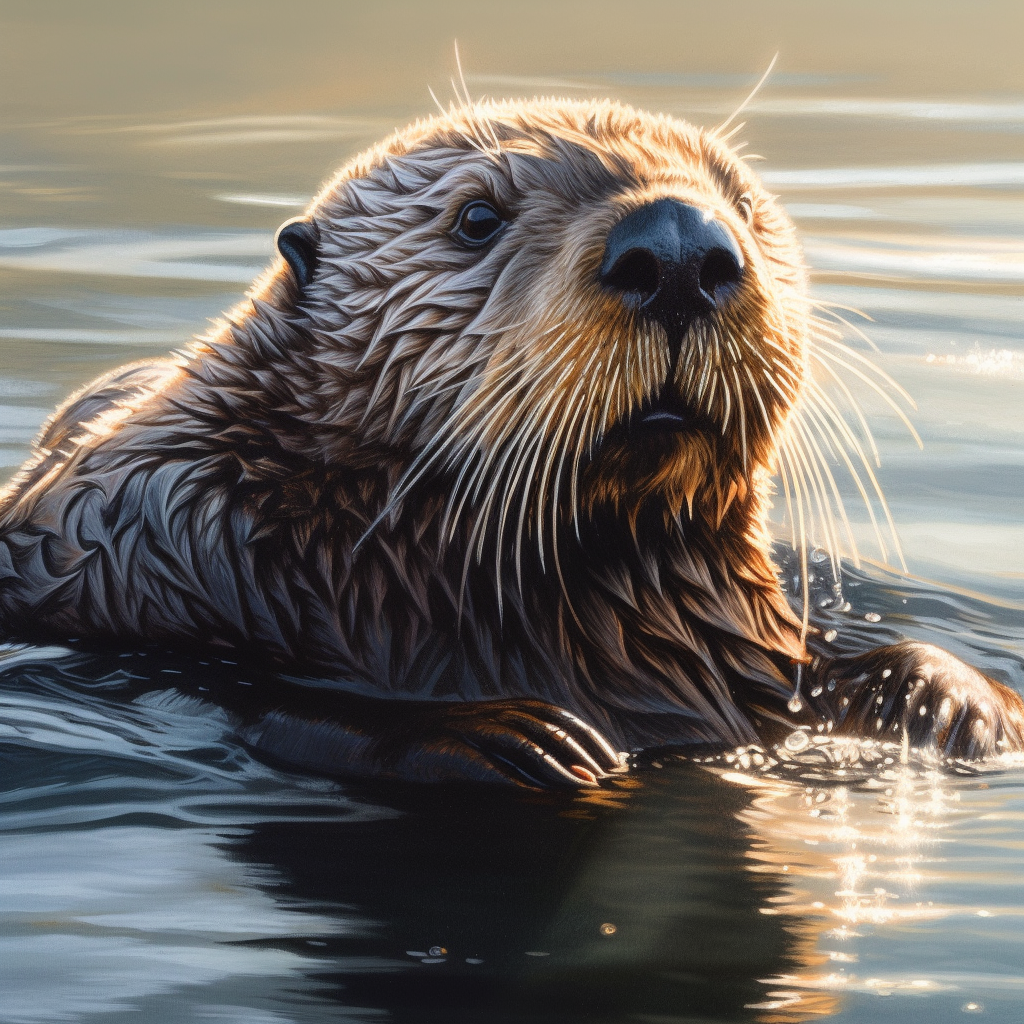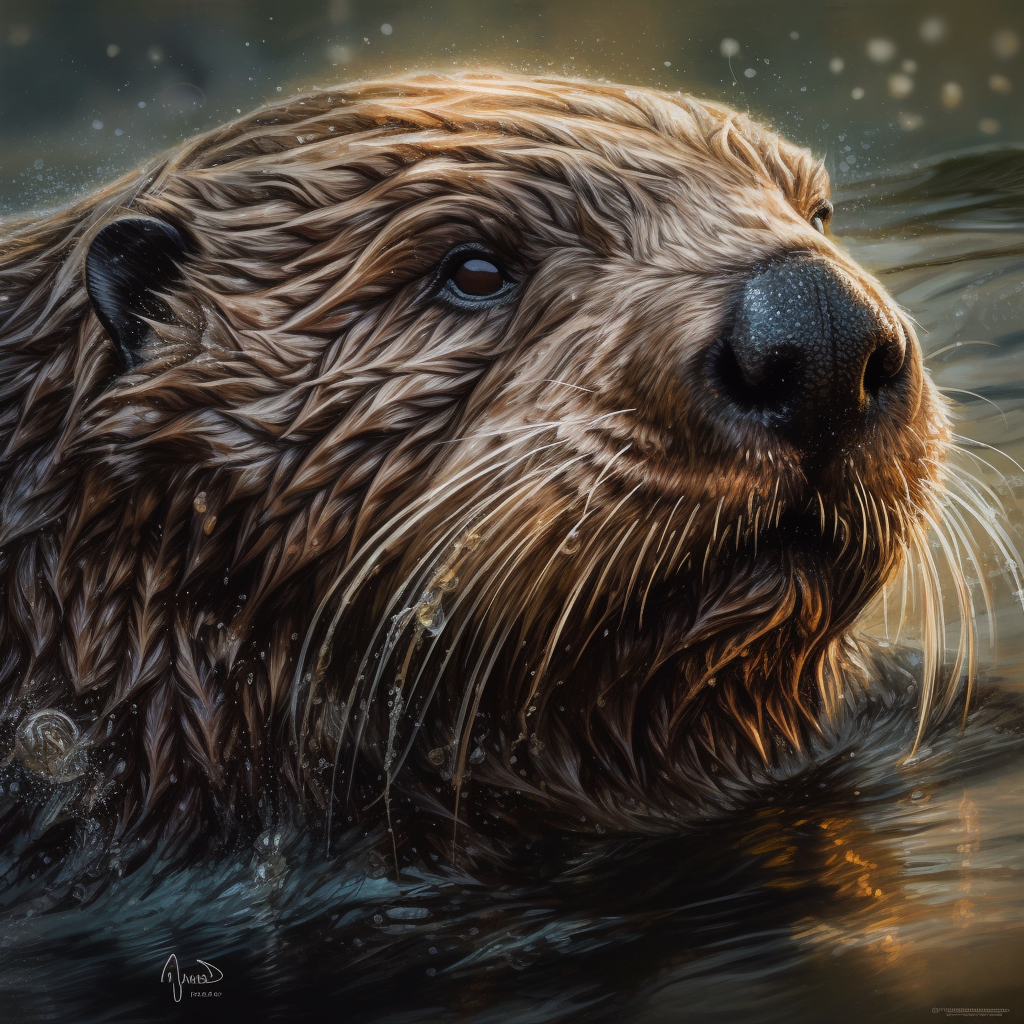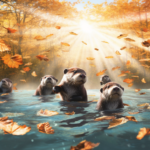Sea otters are fascinating marine mammals known for their playful behavior and charming appearance. They spend most of their lives in the water, relying on their dense fur to keep them warm in the chilly ocean. But have you ever wondered if sea otters have blubber like other marine mammals? Blubber is a thick layer of fat that helps animals stay insulated in cold environments. In this article, we will explore whether sea otters possess blubber and how they adapt to their aquatic lifestyle. So, let’s dive in and discover the secrets of these adorable creatures!
Key Takeaways
- Sea otters do not have blubber like other marine mammals.
- Instead, they have a dense fur coat that provides insulation and buoyancy.
- The fur traps air, keeping the otters warm in cold water.
- Sea otters also have a high metabolic rate to generate heat.
- Their unique adaptations allow them to thrive in cold ocean environments.
The Unique Physiology of Sea Otters

Sea otters are fascinating creatures with unique adaptations that allow them to thrive in their marine environment. In this section, we will explore some of the remarkable physiological features of sea otters and how they contribute to their survival.
A. Do Sea Otters Have Blubber?
Blubber is a thick layer of fat found in many marine mammals, such as seals and whales. It serves as insulation, helping these animals stay warm in cold water. However, sea otters are a bit different. Unlike their blubbery counterparts, sea otters do not have a layer of blubber.
Instead, sea otters rely on their dense fur to keep warm. Their fur is incredibly thick and consists of two layers: a dense undercoat and longer guard hairs on top. This unique fur acts as insulation, trapping a layer of air close to the otter‘s skin. This trapped air provides excellent insulation, keeping the otter warm even in frigid waters.
B. Why Don’t Sea Otters Have Blubber?
The absence of blubber in sea otters is due to their active lifestyle. Sea otters are highly energetic animals that spend a significant amount of time swimming and diving in search of food. Unlike seals and whales that spend long periods resting or migrating, sea otters are constantly on the move.
Having a layer of blubber would hinder their agility and buoyancy in the water. Blubber is dense and would make it difficult for sea otters to maneuver swiftly and dive to great depths. Therefore, sea otters have evolved to rely on their fur for insulation, allowing them to maintain their agility and flexibility in the water.
C. The Thick Fur of Sea Otters: An Alternative to Blubber
Sea otters have one of the densest fur coats of any mammal, with up to a million hairs per square inch. This thick fur serves multiple purposes beyond insulation. It also helps to keep the otters buoyant by trapping air, acting like a natural life jacket.
The fur of sea otters is incredibly waterproof. Specialized guard hairs on the outer layer of their fur contain tiny interlocking barbs that prevent water from reaching the dense undercoat. This waterproofing ability allows sea otters to stay dry and warm, even after hours spent in the water.
D. Do Sea Otters Have Dens?
Sea otters do not have dens like other mammals. Instead, they rely on their fur and the dense kelp forests along the coast for protection and rest. Sea otters are known to wrap themselves in kelp, creating a “raft” that helps keep them together and provides a secure place to rest.
These kelp forests not only offer protection from predators but also serve as a source of food for sea otters. Sea otters are skilled hunters, primarily feeding on shellfish like clams, crabs, and sea urchins. They use rocks as tools to crack open shells, displaying their remarkable adaptability and intelligence.
In conclusion, sea otters have evolved unique adaptations to thrive in their marine environment. While they lack blubber like other marine mammals, their thick fur and reliance on kelp forests provide excellent insulation and protection. These adaptations, along with their hunting skills, contribute to the survival and success of these charismatic creatures in the wild.
The Dietary Habits of Sea Otters

Sea otters are fascinating creatures that spend most of their lives in the water. As marine mammals, they have unique adaptations that allow them to thrive in their aquatic environment. One aspect of their lifestyle that is particularly interesting is their dietary habits. Let’s take a closer look at what sea otters eat, where they find their food, how much they consume, and why they eat so much.
A. What Do Otters Eat in the Ocean?
Sea otters have a diverse diet that primarily consists of marine invertebrates. They are known to be opportunistic feeders, meaning they will eat whatever is readily available in their habitat. Some of their favorite foods include:
-
Sea Urchins: Sea otters have a special fondness for sea urchins. These spiky creatures are a staple in their diet, and sea otters play a crucial role in maintaining the balance of kelp forests. By preying on sea urchins, they prevent these herbivores from overgrazing on kelp, which is essential for the health of the ecosystem.
-
Crabs: Sea otters are skilled hunters and can catch a variety of crab species. They use their dexterous paws to search for crabs hiding in crevices or under rocks. Once they locate their prey, they crack open the shells using rocks as tools.
-
Mussels and Clams: These bivalve mollusks are another favorite food source for sea otters. They use their sharp teeth to pry open the shells and extract the tasty meat inside.
-
Abalone: Sea otters have a particular affinity for abalone, a type of marine snail. These mollusks are highly prized for their meat and are considered a delicacy in many cultures. Unfortunately, this has led to overfishing and a decline in abalone populations.
-
Fish: While sea otters primarily feed on invertebrates, they are also known to consume small fish occasionally. They may catch fish such as salmon, herring, and rockfish when they are abundant in their habitat.
B. Where Do Sea Otters Eat?
Sea otters can be found along the coastlines of the northern Pacific Ocean, from Alaska to California. They inhabit a variety of habitats, including rocky shores, estuaries, and kelp forests. These environments provide an abundant food supply for sea otters, allowing them to thrive.
Kelp forests, in particular, are vital for sea otters as they provide both food and shelter. Sea otters often wrap themselves in kelp fronds to anchor themselves while they eat, preventing them from drifting away with the current. This behavior also helps protect them from predators, such as sharks and killer whales.
C. How Much Do Sea Otters Eat?
Sea otters have incredibly high metabolic rates, which means they need to consume a large amount of food to fuel their bodies. On average, an adult sea otter can eat up to 25% of its body weight in a single day! To put that into perspective, imagine a 150-pound person eating 37.5 pounds of food every day.
Their voracious appetite is necessary to maintain their body temperature. Unlike other marine mammals, sea otters do not have a layer of blubber to keep them warm. Instead, they rely on their dense fur and a high metabolic rate to generate heat. By consuming large quantities of food, they can produce enough energy to stay warm in the cold ocean waters.
D. Why Do Sea Otters Eat So Much?
The need to consume copious amounts of food is directly linked to the sea otter’s lack of blubber. Blubber is a thick layer of fat found in many marine mammals, such as seals and whales, which acts as insulation and helps regulate body temperature. Sea otters, however, have evolved a different strategy for thermoregulation.
By constantly eating and metabolizing food, sea otters generate heat, which helps them maintain a stable body temperature. This is especially important because they spend a significant amount of time in the water, where heat loss is much more rapid than on land. Their high metabolic rate allows them to stay warm even in cold ocean environments.
In conclusion, sea otters have a diverse diet consisting mainly of marine invertebrates such as sea urchins, crabs, mussels, clams, and abalone. They can be found in various coastal habitats, with a particular affinity for kelp forests. Sea otters consume a large amount of food each day to fuel their high metabolic rates and generate enough heat to stay warm in the absence of blubber. Their dietary habits and unique adaptations make them fascinating creatures to study and admire.
The Role of Sea Otters in the Ecosystem

Sea otters play a crucial role in the marine ecosystem, and their presence has a significant impact on various aspects of the food chain and overall ecosystem health. Let’s explore why these adorable creatures are so important and how they contribute to the balance of their habitat.
A. Why Are Sea Otters Important to the Ecosystem?
Sea otters are considered a keystone species, meaning they have a disproportionately large effect on their environment relative to their abundance. They help maintain the health and diversity of the kelp forest ecosystem, which is a vital habitat for numerous marine species.
One of the key reasons sea otters are important is their role in controlling the population of sea urchins. Sea urchins feed on kelp, and if their population is left unchecked, they can decimate entire kelp forests. Sea otters prey on sea urchins, keeping their numbers in check and allowing kelp forests to thrive.
Additionally, sea otters indirectly benefit other species by promoting biodiversity. By controlling sea urchin populations, they create a favorable environment for other marine organisms, such as fish, crustaceans, and invertebrates, to flourish. This, in turn, supports a healthy and diverse ecosystem.
B. The Impact of Sea Otters on the Food Chain: Are Sea Otters Consumers?
Yes, sea otters are consumers within the food chain. They primarily feed on a variety of marine invertebrates, including sea urchins, crabs, clams, and snails. Their diet is essential in maintaining a balance within the ecosystem.
Sea otters’ consumption of sea urchins, as mentioned earlier, helps prevent overgrazing of kelp forests. By controlling the sea urchin population, sea otters indirectly support the growth and survival of other species that rely on kelp as a habitat or food source.
Furthermore, sea otters’ feeding habits also contribute to nutrient cycling in the ecosystem. When sea otters consume prey, they excrete waste that contains essential nutrients. These nutrients are then released into the water, benefiting the surrounding plants and organisms.
C. Why Are Sea Otters Good for the Ecosystem?
Sea otters provide several benefits to the ecosystem beyond their role in maintaining the balance of the food chain. Here are a few reasons why they are considered good for the ecosystem:
-
Biodiversity: As mentioned earlier, sea otters promote biodiversity by controlling sea urchin populations and allowing other species to thrive.
-
Carbon Sequestration: Kelp forests, which are protected and enhanced by sea otters, play a crucial role in carbon sequestration. They absorb carbon dioxide from the atmosphere, helping mitigate climate change.
-
Habitat Protection: Sea otters create and maintain healthy habitats by preventing the destruction of kelp forests. These forests provide shelter, food, and breeding grounds for numerous marine organisms.
-
Economic Value: Sea otters also have economic value. They attract tourists and nature enthusiasts, contributing to local economies through ecotourism.
In conclusion, sea otters are not only adorable creatures but also vital contributors to the marine ecosystem. Their presence helps maintain the balance of the food chain, promotes biodiversity, protects habitats, and even aids in carbon sequestration. Understanding and conserving these remarkable animals is crucial for the overall health and sustainability of our oceans.
The Fascinating Behavior and Appearance of Sea Otters
Sea otters are undeniably one of the most adorable creatures in the animal kingdom. With their round faces, soft fur, and playful antics, it’s hard not to be captivated by their charm. But there’s more to sea otters than just their cuteness. These marine mammals possess a range of fascinating behaviors and physical characteristics that contribute to their survival in the harsh aquatic environment.
A. Why Are Sea Otters So Cute?
Sea otters have a unique appearance that makes them incredibly endearing to humans. Their large, expressive eyes and sweet smiles give them an almost human-like quality. But what is it about their appearance that makes them so irresistibly cute?
One of the key factors is their fur. Sea otters have the densest fur of any mammal, with up to a million hairs per square inch. This luxurious coat not only keeps them warm in the chilly waters but also gives them that adorable fluffy look. The fur is made up of two layers: a dense undercoat and longer guard hairs on top. This combination helps to trap air and create an insulating layer, keeping the otters warm and buoyant.
Another reason for their cuteness is their playful nature. Sea otters are known for their mischievous behavior, often seen floating on their backs, playing with rocks, or holding hands with other otters while they sleep. These playful antics make them incredibly entertaining to watch and add to their overall charm.
B. Are Sea Otters Good to Eat?
While sea otters are undoubtedly cute, they are not considered a food source for humans. In fact, they are protected by law in many countries due to their endangered status. However, this hasn’t always been the case.
Historically, sea otters were hunted for their fur, which was highly prized in the fur trade. This led to a significant decline in their population, pushing them to the brink of extinction. Thankfully, conservation efforts have helped to stabilize their numbers, but they are still considered a vulnerable species.
Sea otters play a crucial role in maintaining the health of their ecosystems. They are keystone species, meaning their presence has a disproportionate impact on the overall balance of their habitat. By feeding on sea urchins, otters help control their population, preventing overgrazing of kelp forests. These underwater forests provide important habitat for a variety of marine life, including fish, invertebrates, and other mammals.
In conclusion, sea otters are not only incredibly cute but also play a vital role in their ecosystems. Their unique appearance and playful behavior make them a favorite among nature enthusiasts. However, it’s important to remember that they are protected and should be admired from a distance to ensure their continued survival. Conclusion
In conclusion, sea otters do not have blubber like other marine mammals such as whales and seals. Instead, they have a unique adaptation to survive in cold waters – a dense fur coat. This fur coat consists of two layers: a dense underfur and longer guard hairs. These layers work together to provide insulation and keep the otters warm in the chilly ocean. The fur traps air close to the otter‘s skin, creating a layer of insulation that helps to retain body heat. Additionally, sea otters have a high metabolic rate, which generates heat to keep them warm. This combination of a thick fur coat and a high metabolic rate allows sea otters to thrive in their cold marine habitats. Despite not having blubber, sea otters have evolved other mechanisms to stay warm and maintain their body temperature in the frigid waters they call home.
Frequently Asked Questions
Why do sea otters not have blubber?
Sea otters do not have blubber, which is a thick layer of fat that many marine mammals use for insulation, because they rely on their exceptionally dense fur for warmth. This fur provides better insulation than blubber, allowing otters to maintain their body temperature in cold water.
Do otters have blubber?
Unlike many other marine mammals, otters do not have blubber. Instead, they have a dense fur coat that traps a layer of air for insulation, keeping them warm in cold water.
Do sea otters have dens?
Yes, sea otters do have dens. They often reside in kelp forests, estuaries, and coastal waters where they can find shelter and food. However, they do not build dens or nests like some other otter species, instead they often rest in kelp or other marine vegetation.
Why are sea otters important to the ecosystem?
Sea otters play a crucial role in the ecosystem by controlling sea urchin populations, which would otherwise damage kelp forests. Kelp forests are important habitats for many marine species, so by maintaining the health of these forests, sea otters support biodiversity.
How much do sea otters eat?
Sea otters have a high metabolic rate and need to eat a lot to stay warm. They can eat up to 25% of their body weight in food each day. Their diet mainly consists of invertebrates like sea urchins, clams, crabs, and snails.
Are sea otters consumers?
Yes, sea otters are consumers. They are secondary consumers, feeding on a variety of invertebrates such as sea urchins, crabs, and clams, which are primary consumers.
Why do sea otters eat so much?
Sea otters eat so much because they have a high metabolic rate, which is necessary to generate body heat and maintain their body temperature in the cold ocean environment. Their diet helps them to get the energy they need to survive.
Where do sea otters eat?
Sea otters usually eat while floating on their backs at the water’s surface. They use their chest as a table and often use tools, like rocks, to crack open hard-shelled prey.
Why do sea otters have thick fur?
Sea otters have the densest fur of any animal, with up to one million hairs per square inch. This thick fur traps a layer of air close to their skin, providing insulation and helping them to maintain their body temperature in cold water.
Why are sea otters so cute?
The perception of sea otters as cute may come from their playful behavior, their expressive faces, and their unique habit of floating on their backs, often while using a rock to crack open shellfish. However, it’s important to remember that they are wild animals and should be respected as such.




